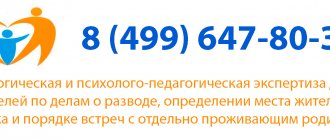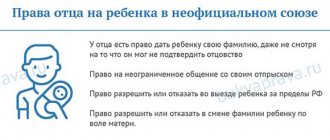History of creation
The Convention was adopted in 1989 by the United Nations. However, the document came into force only in 1990.
The predecessors of the Convention were the following documents:
- 1924 - Geneva Declaration.
- 1948 - Universal Declaration of Human Rights.
- 1959 - Declaration of the Rights of Minors.
Main provisions of the Convention: summary
All countries that have adopted the Convention must comply with its provisions. An international legal act consists of three main parts, so it is necessary to become familiar with each of them.
First part
Let's take a look at the summary of the articles listed in the first part:
- Articles 1-4: define the concept of “child”, and also state that the interests of minors are higher than the needs of society. States that have adopted an international legal instrument undertake to ensure compliance with its principles.
- Articles 5-11: contain the most important interests of the minor. Namely, the right to:
- life;
- Name;
- receiving care and education from parents;
- receiving free medical care.
- Articles 12-17: define the rights of children to express their own opinions, freedom of thought, and receive the necessary information.
- Articles 20-27: define the interests of special categories of children. We are talking about persons left without the guardianship of biological parents. The state is obliged to protect such children, take care of them, and give them the opportunity to find a new family.
Refugees also belong to a special category of children, even if they crossed the border with their parents. A minor can count on receiving humanitarian assistance.
- Articles 28-31: secure the rights of children to a standard of living necessary for the mental, physical and spiritual development of the minor.
- Articles 32-36: the state is obliged to protect children from illegal employment, alcohol and drugs, kidnapping and slavery. If a minor is subject to economic exploitation, which interferes with the acquisition of school knowledge, this will negatively affect his mental and mental development. The state sets the minimum age at which a citizen can get a job.
If a minor is involved in criminal activity, the guilty person will bear criminal liability. This also applies to cases where a child is forced to take drugs or alcohol.
Articles 37-40: define the rights of an offspring who ends up in prison or a war zone. A minor cannot be executed, imprisoned for life, or subjected to torture.
According to international law, a child is a citizen under the age of 18.
Second part
The second part contains articles 42-45. They determine the size of the Committee, its responsibilities and structure. Also, one of the articles indicates the child’s right to begin working at the age of 14.
The second part also talks about how States Parties to the Convention exchange information with each other.
Every 4 years the Committee is elected. His main responsibility is to consider complaints about cases of violation of the interests of minors. If the complaint was not anonymous, the Committee has the right to investigate the specific situation.
Since 2014, minor citizens whose interests have been violated can file a complaint with the Committee for the Protection of Rights and Freedoms.
The third part
The third part contains articles 46-54. They determine the procedure for solving procedural and legal problems of compliance by the state with the provisions of an international legal act. One of the articles states that any state can accept the Convention, and it does not have to be a member of the UN.
A state that has adopted the Convention may at any time cease to support the principles of protection of minors. To do this, it must withdraw from the list of supporters of this international legal document.
Right to education
The international legal act states that the offspring has the right to receive free primary education. It must be accessible to all segments of society. The state also strives to provide citizens with the opportunity to obtain secondary and higher education.
One of the main goals of the international document is to overcome illiteracy of the population, as well as to ensure that all citizens receive the latest scientific and technical knowledge.
Raising a minor
An international legal document stipulates that when the offspring reaches a certain age, he will be able to express his opinion when resolving intrafamily issues. Also, the child’s position will be taken into account at court hearings if his interests are affected.
The international legal document states that the offspring has the right to see his relatives. The exception is cases when such meetings harm a minor.
The rights of children with any disabilities should not be infringed. They can also have a family, receive education, medical care, etc.
Children's rights
In accordance with Article 1 of the Convention, a child is a person under 18 years of age, unless the law of his country establishes an earlier age of majority. A child has the same basic rights as any person: to life, health, name, citizenship, education, recreation, personal integrity, freedom, protection of honor and dignity, choice of language of communication. In addition, the child must have the following rights:
- for games and leisure activities;
- for the family (if a child has lost his parents, the state must take care of his care);
- to develop in accordance with his abilities and talents;
- for help from adults and the state;
- to receive special living conditions if a child was born with disabilities.
Convention in Russia
In Russia, the Convention entered into force on August 23, 1993. This fact is enshrined in Decree of the Government of the Russian Federation No. 848.
Also in Russia, the rights of a minor citizen are regulated by the following legal acts:
- Constitution of the Russian Federation.
- Family Code of the Russian Federation.
- Legislation of the Russian Federation on protecting the health of citizens.
- Federal Law “On Education”.
- Law on basic guarantees of children's rights in the Russian Federation.
- Law on additional guarantees for the protection of orphans.
- Federal Law “On Guardianship and Trusteeship”.
Russia annually compiles a document that reflects the measures taken by the country to maintain the provisions of the Convention. It is sent to the UN for consideration.
History of the adoption of the Convention
In preparation for International Children's Day in 1979, Poland initiated the development of the Convention on the Rights of the Child. Work on this agreement went on for many years, and finally, on November 20, 1989, the Convention was signed. 20 states became its participants, all of them were members of the UN. The Convention on the Rights of the Child came into force on September 2, 1990. Currently, all 193 UN members participate in the Convention. The Convention establishes the UN Committee, a special body that monitors states' compliance with the provisions of the Convention and responds to violations of children's rights.
On May 25, 2 optional protocols were adopted to the Convention on the Rights of the Child in New York. 1 document concerns the problem of the participation of children in armed conflicts, and 2 - the sale of children, child prostitution and pornography. In 2011, the Optional Protocol on the procedure for communications to the Committee on the Rights of the Child was adopted. States undertake obligations to comply with the requirements not only of the Convention, but also of its additional protocols.
Since the Convention was created on the basis of the UN, it develops the basic principles of this organization, expressed in its Charter. The activities of the UN specialized agency, the Children's Fund (UNICEF), are based on the Convention. Options for the emblem for the Convention on the Rights of the Child can be the logos of the UN itself and the Children's Fund.
Application of the Convention in practice
Children's rights as enshrined in the Convention are being violated. Often the culprits are the parents of the minor. Although it is they who must ensure the protection of the interests of their child.
In Russia, the following persons and bodies monitor compliance with the rights of minors:
- Prosecutor's office.
- Guardianship and trusteeship authorities.
- Committee on Juvenile Affairs.
- Court.
If a citizen violates the interests of a minor, he will bear either criminal or administrative liability. It all depends on the severity of the offense.
International Convention on the Rights of the Child
Comparative analysis of the “International Convention on the Rights of the Child” and the Federal Law “On Basic Guarantees of the Rights of the Child in the Russian Federation”
The history of the creation of the international convention on the rights of the child
2018
The history of the creation of the international convention on the rights of the child
The UN Convention on the Rights of the Child is an international legal document that defines the rights of children in member states. The Convention on the Rights of the Child is the first and main international legal document of a binding nature, dedicated to a wide range of rights of the child. The document consists of 54 articles detailing the individual rights of persons under the age of 18 (unless the age of majority is reached under applicable laws) to the full development of their capabilities in an environment free from hunger and want, cruelty, exploitation and other forms of abuse. The parties to the Convention on the Rights of the Child are the Holy See and all UN member countries except the United States, South Sudan and Somalia.
The issue of children's rights was raised relatively recently. It was only as a result of democratic reform movements in the 19th century that states assumed responsibility for protecting the child from parental abuse and employer economic exploitation.
On November 20, 1989, the UN General Assembly adopted the Convention on the Rights of the Child, which is today international law.
The USSR ratified this Convention (the date of ratification by the Supreme Soviet of the USSR was June 13, 1990), the Convention entered into force for the Russian Federation on September 15, 1990.
The Convention on the Rights of the Child provides equal rights for children and adolescents under 18 years of age. Right to life and development. The right to a peaceful childhood and protection from violence. The right to be respected for your way of thinking. The interests of the child must always be taken into account first.
Countries that have acceded to the Convention are obliged to make maximum use of all available means to ensure the rights of the child.
“Comparative analysis of the “International Convention on the Rights of the Child” and the Federal Law “On Basic Guarantees of the Rights of the Child in the Russian Federation”
| "International Convention on the Rights of the Child" | Federal Law “On Basic Guarantees of the Rights of the Child in the Russian Federation” |
| Art.1 | Art.1 |
| Art.2 | Art.6 |
| Art. 3.4 | Art.4,5,7 (part 1) |
| Art. 5 | Art.7 (part 2,3,4), art.9 |
| Art.6 (part 2), 24 | Art.10 |
| Art.8 | Art.15 |
| Art.9 | Art.23 |
| Art.15 | Art.12 |
| Art.16 | Art.13 |
| Art.17 | Art.14 |
| Art.19 | 14.1 |
| Art.24 | Art.10 |
| Art.26 | Art. 5 (part 2) |
| Art.27 | Art.13 |
| Art.31 | Art.12 |
| Art.32 | Article 14.1 |
| Art.34, 35 | Art. 14.2 |
| Art.36 | Art.14 |
| Art.37 | Art.12 |
| Art.39 | Art.16 |
| Art.43 | Art.22 |
| Art.44 | Art. 22 |
Conclusion: The main articles of the Convention on the Rights of the Child in the Russian Federation coincide with the Federal Law “On Basic Guarantees of the Rights of the Child in the Russian Federation.” But some articles of the convention are not reflected in our law:
Article 7
"International Convention on the Rights of the Child"
1. The child is registered immediately after birth and from the moment of birth has the right to a name and to acquire a nationality and, as far as possible, the right to know his parents and the right to be cared for by them.
2. States Parties shall ensure the implementation of these rights in accordance with their national legislation and the fulfillment of their obligations under relevant international instruments in this area, in particular where the child would otherwise be stateless.
Article 10
"International Convention on the Rights of the Child"
1. In accordance with the obligation of States Parties under paragraph 1 of Article 9, applications by a child or his parents to enter or leave a State Party for the purpose of family reunification shall be dealt with by States Parties in a positive, humane and expeditious manner. States Parties shall further ensure that the submission of such a request does not result in adverse consequences for the applicants and family members.
2. A child whose parents reside in different countries has the right to maintain on a regular basis, except in special circumstances, personal relationships and direct contacts with both parents.
Article 11
"International Convention on the Rights of the Child"
1. States Parties shall take measures to combat the illegal movement and non-return of children from abroad.
2. For this purpose, participating States shall promote the conclusion of bilateral or multilateral agreements or accession to existing agreements.
Article 12
"International Convention on the Rights of the Child"
1. States Parties shall ensure that the child who is capable of forming his own views has the right to express those views freely in all matters affecting the child, the views of the child being given due weight in accordance with the age and maturity of the child.
2. To this end, the child shall, in particular, be given the opportunity to be heard in any judicial or administrative proceedings affecting the child, either directly or through a representative or appropriate authority, in a manner provided for by the procedural rules of national law.
Article 13
"International Convention on the Rights of the Child"
1. The child has the right to freely express his opinion; this right includes the freedom to seek, receive and impart information and ideas of all kinds, regardless of boundaries, orally, in writing or in print, in the form of works of art or through other media of the child's choice.
2. The exercise of this right may be subject to certain restrictions, but these restrictions can only be those restrictions that are provided by law and that are necessary:
a) to respect the rights and reputations of others; or
b) to protect national security or public order (or public health or morals).
Article 14
"International Convention on the Rights of the Child"
1. States Parties shall respect the child’s right to freedom of thought, conscience and religion.
2. States Parties shall respect the rights and responsibilities of parents and, where appropriate, legal guardians to guide the child in the exercise of his or her rights in a manner consistent with the developing abilities of the child.
3. Freedom to manifest one's religion or belief may be subject only to such restrictions as are established by law and are necessary to protect national security, public order, morals and public health or to protect the fundamental rights and freedoms of others.
Article 18
"International Convention on the Rights of the Child"
1. States Parties shall make every possible effort to ensure recognition of the principle of common and equal responsibility of both parents for the upbringing and development of the child.
2. In order to guarantee and promote the implementation of the rights set forth in this Convention, States Parties shall provide parents and legal guardians with adequate assistance in the performance of their responsibilities in raising children and ensure the development of a network of child care institutions.
3. States Parties shall take all necessary measures to ensure that children of working parents have the right to benefit from childcare services and facilities available to them.
Article 20
"International Convention on the Rights of the Child"
1. A child who is temporarily or permanently deprived of his family environment or who, in his own best interests, cannot remain in such an environment, has the right to special protection and assistance provided by the State.
2. Member States shall, in accordance with their national laws, provide for substitute care for such a child.
Article 21
International Convention on the Rights of the Child
States Parties that have recognized and/or permitted the existence of an adoption system shall ensure that the best interests of the child are a paramount consideration and they:
a) ensure that the adoption of a child is authorized only by competent authorities who determine, in accordance with applicable law and procedures and on the basis of all relevant and reliable information, that the adoption is permissible in view of the status of the child in relation to parents, relatives and legal guardians and that, if required, , the persons concerned have given their informed consent to the adoption on the basis of such consultation as may be necessary;
(b) Recognize that intercountry adoption may be considered as an alternative means of caring for a child if the child cannot be placed in foster care or with a family that could provide foster care or adoption, and if the provision of any suitable care in the child's country of origin is not possible;
(c) ensure that, in the case of intercountry adoption, the same guarantees and standards apply as are applied to domestic adoption;
d) take all necessary measures to ensure that, in the event of intercountry adoption, the placement of the child does not result in undue financial benefits to the persons concerned;
e) promote, where necessary, the achievement of the objectives of this article by concluding bilateral and multilateral arrangements or agreements and endeavor, on this basis, to ensure that the placement of the child in another country is carried out by the competent authorities or bodies.
Article 22







